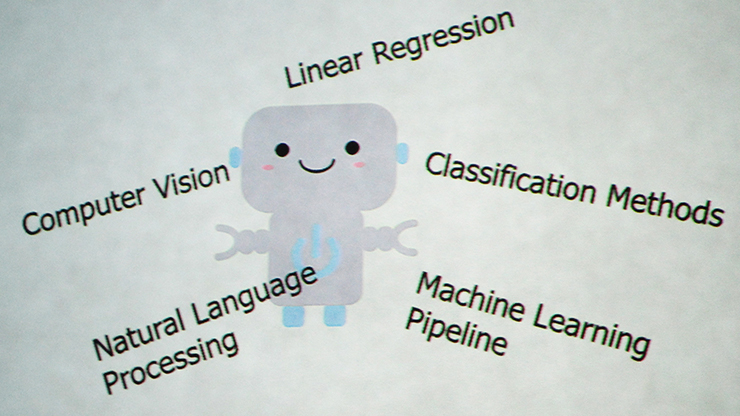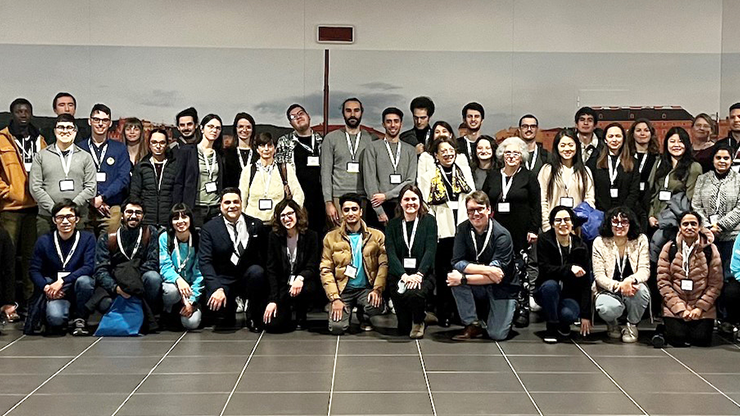Key Takeaways From AN24 Session on Research Funding at Primarily Undergraduate Institutions
Applied mathematics and computational science face a common predicament in academia: Each year, there are significantly more research-focused Ph.D. graduates than available faculty slots at R1 institutions. And given that we are fully immersed in the age of big data and artificial intelligence, the need for a globally competitive and mathematically skilled workforce is higher than ever. While primarily undergraduate institutions (PUIs) often offer attractive faculty opportunities and play a pivotal role in preparing undergraduate students for careers and graduate study in science, technology, engineering, and mathematics (STEM), relatively little research funding is earmarked for faculty at these institutions. During the 2024 SIAM Annual Meeting (AN24), which took place last month in Spokane, Wash., a minisymposium highlighted the important role of PUI faculty in research and undergraduate student training. The session featured talks by faculty from throughout the U.S. who shared their experiences and advice for fellow PUI faculty, other organizations, and funding agencies. After the presentations, the speakers and audience members discussed a myriad of issues related to PUI funding. Below are a few key takeaways from the session, with different perspectives for faculty members and funding agencies.
For PUI Faculty
It is essential for faculty to capitalize on their network connections to craft successful funding proposals, as competitive grants are not won in a vacuum. During the AN24 session, Aditya Viswanathan of the University of Michigan-Dearborn reminded attendees that research collaborations—whether with faculty at R1 or R2 institutions, national lab scientists, or other PUI colleagues—are a huge opportunity for PUI faculty without a graduate student workforce to craft convincing proposals. Additionally, faculty should pursue connections with colleagues from their Ph.D. or postdoctoral studies who have successfully secured funding and ask to read their proposals (and have them read theirs). While new faculty know how to write academic papers, grant proposals are a different beast; as such, seeing what has worked well in the past can be immensely helpful. In the face of rejected proposals, mentors can also offer positivity and guidance, encourage persistence and resilience, and suggest a careful reading of reviews to plan for the next submission. Regardless of proposal deadlines, now is the time to establish an open line of communication with your network of collaborators, mentors, program managers, and grant office staff.
Additionally, PUI faculty should take advantage of summer programs to identify meaningful research problems. Given the often-heavy teaching and advising load at PUIs, research can involuntarily fall by the wayside during the academic year. It is thus imperative that faculty remain abreast of the state of the art through summer programs that connect them with dedicated lab researchers. During the AN24 minisymposium, Svetlana Tlupova of Farmingdale State College and Henry Boateng of San Francisco State University discussed their summer work as part of the Department of Energy’s (DOE) Visiting Faculty Program, which is exclusive to faculty institutions that do not fall within the R1 and R2 classifications. The U.S. Department of the Air Force Summer Faculty Fellowship Program is a similar type of research residency.
While course reductions to focus on research are sometimes an option—depending on the institution—the aforementioned focused summer opportunities are a different avenue that provides research stimulation, pre-explored questions that are relevant to practitioners in the field, and vetted preliminary data to facilitate independent discovery and contributions. Both the minisymposium presenters and attendees agreed that these types of collaborations are a great first step towards a targeted grant proposal. And for those who are struggling to find problems that are accessible to their undergraduate students, summer programs like Research Experiences for Undergraduate Faculty and the Institute for Advanced Study’s Undergraduate Faculty Program introduce open questions in a particular area to help them get back into the fold.
For Funding Agencies
In general, PUIs are an underutilized research asset in applied and computational mathematics. For instance, the National Science Foundation’s (NSF) program on Facilitating Research at Primarily Undergraduate Institutions only has six active awards in the applied and computational mathematics sector. Chiu-Yen Kao of Claremont McKenna College noted that anyone who is applying to this program should view the five-page Research in Undergraduate Institutions (RUI) Impact Statement as an extra opportunity to make a case for themselves and their students; applicants should let reviewers know that they have tangible undergraduate-accessible topics, clear and achievable goals, and quantifiable student training outcomes. The RUI Impact Statement also allows applicants to promote the uniqueness of their institutions and discuss any factors that affect the pace of productivity (e.g., teaching and advising loads). Everyone at the minisymposium agreed that greater involvement of PUI faculty on review panels would advance the goals of NSF and other funding agencies while symbiotically advertising PUI-relevant opportunities.
Finally, funding for PUI research can advance diversity. While PUIs might invoke thoughts of selective liberal arts colleges, they actually include non-flagship state schools, minority-serving institutions, and historically Black colleges. Many funding agencies have programs that target institutions that are historically underrepresented in their funding profiles, such as DOE’s Funding for Accelerated, Inclusive Research and Reaching a New Energy Sciences Workforce programs and NSF’s Computer and Information Science and Engineering Research Expansion Program. Numerous agencies also have clear diversity, equity, and inclusion goals, including NSF’s “Inspiring Missing Millions” and “Create Opportunities Everywhere” initiatives. If PUI faculty capitalize on these funding prospects, they can play a prominent role in training a diverse STEM workforce.
Concluding Thoughts
Finally, we want to solicit participation from the SIAM community. If you are thinking about any of the following questions, we want to hear from you!
- How do you view the role of PUIs in applied mathematics and computational science research?
- How have you attracted and incorporated a diverse group of undergraduates in state-of-the-art research?
- How can your institution’s administration better support faculty research?
- How can funding agencies increase participation from PUI faculty? And how can PUI faculty attain more earmarked funding?
If you are interested in promoting federal funding for research at PUIs, please contact Victor Churchill at victor.churchill@trincoll.edu, consider applying to the SIAM Science Policy Fellowship Program, or nominate a PUI faculty member for SIAM leadership. We hope to continue our energizing conversations around PUI research contributions and welcome your support.
About the Author
Victor Churchill
Assistant professor, Trinity College
Victor Churchill is an assistant professor in the Department of Mathematics at Trinity College and a 2023-2024 SIAM Science Policy Fellow. His research interests include scientific machine learning and inverse problems in imaging, while his policy interests focus on issues that pertain to faculty and students at primarily undergraduate institutions.

Stay Up-to-Date with Email Alerts
Sign up for our monthly newsletter and emails about other topics of your choosing.






